Zimbabwe’s lithium resources, centered on granitic pegmatites, are emerging as significant players in the global market. Notably, the Bikita pegmatite is recognized as one of the largest lithium-bearing pegmatites in the world. While traditional reports provide extensive geological data, recent studies and modern exploration techniques are reshaping our understanding of these deposits.
1. General Occurrence
- Granitic Pegmatites:
- Setting:
- Lithium minerals occur predominantly in coarse-grained granitic pegmatites.
- They appear as irregular dikes, lenses, or veins, often along batholith margins.
- Crystallization Process:
- Pegmatites represent the final, most hydrous fraction of granitic magma, frequently enriched in trace elements and rare minerals.
- Association with Greenstone Belts:
- Economic pegmatites are commonly linked to Archaean greenstone belts, particularly where younger granitoids intrude.
- These settings are known to host not only lithium but also beryllium, tantalum, and caesium.
- Metamorphic Belt Pegmatites:
- In the Magondi and Zambezi belts, pegmatites occur within metamorphic rocks.
- Although less common than those in greenstone belts, they still contribute to the lithium portfolio.
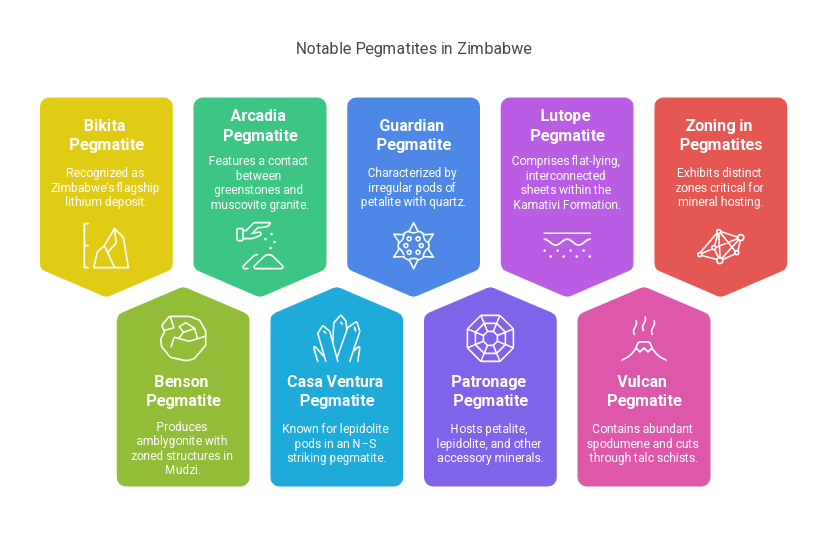
2. Types of Lithium Minerals
- Amblygonite:
- A phosphate mineral containing approximately 8–10% Li₂O.
- Petalite:
- A white to grey aluminum silicate, valued for its relatively low specific gravity.
- Spodumene:
- A clinopyroxene mineral with prismatic crystals; its Li₂O content ranges from 2–8%.
- Lepidolite:
- Found occasionally, this lithium-rich mica contributes to the overall lithium content.
Fact Check: Recent geochemical analyses confirm these minerals as the principal lithium hosts in Zimbabwe’s pegmatites, consistent with global pegmatite studies.
3. Key Locations and Their Characteristics
- Bikita Pegmatite:
- Significance:
- Recognized as Zimbabwe’s flagship lithium deposit and one of the world’s largest.
- Coordinates:
- Approximately 19°57′00″S / 31°26′00″E.
- Mineralogy:
- Contains high concentrations of petalite and spodumene, with associated microcline.
- Other Notable Pegmatites:
- Benson Pegmatite:
- Located in Mudzi (approx. 17°01′00″S / 32°16′00″E) within the Makaha Greenstone Belt; produces amblygonite with zoned structures.
- Arcadia Pegmatite:
- Situated in Goromonzi (around 17°46′30″S / 31°24′30″E); features a contact between greenstones and muscovite granite, with petalite in the west and spodumene in the east.
- Casa Ventura Pegmatite:
- Also in Goromonzi (approximately 17°44′30″S / 31°14′30″E); an N–S striking pegmatite in epidiorite, known for lepidolite pods.
- Guardian Pegmatite:
- Found in Goromonzi (circa 17°45′00″S / 31°14′00″E); characterized by irregular pods of petalite with quartz and feldspar.
- Patronage Pegmatite:
- A complex, highly greisenized NE-striking pegmatite in Goromonzi (around 17°45′30″S / 31°12′00″E) hosting petalite, lepidolite, and other accessory minerals (spodumene, cassiterite, microlite/tantalite, beryl, and quartz).
- Lutope Pegmatite:
- Located in Hwange (approx. 18°20′30″S / 26°57′30″E); comprises flat-lying, interconnected sheets within the Kamativi Formation.
- Vulcan Pegmatite:
- Situated in Mberengwa (around 20°56′00″S / 29°55′00″E); cuts through talc schists and contains abundant spodumene.
- Zoning in Pegmatites:
- Zonal Structure:
- Typically, pegmatites exhibit distinct zones (border, wall, intermediate, and core).
- The intermediate zone is critical for hosting feldspar, petalite, spodumene, and microcline, while core zones may contain massive lepidolite.
4. Gravity Data and Lithium Exploration
- Current Insights:
- Existing EPO reports note lithium anomalies but lack detailed integration with gravity data from the B103 National Gravity Dataset.
- Exploration Potential:
- Although gravity data correlations remain underexplored, there is potential to refine targets using modern gravity and magnetic survey techniques in areas with known pegmatite occurrences.
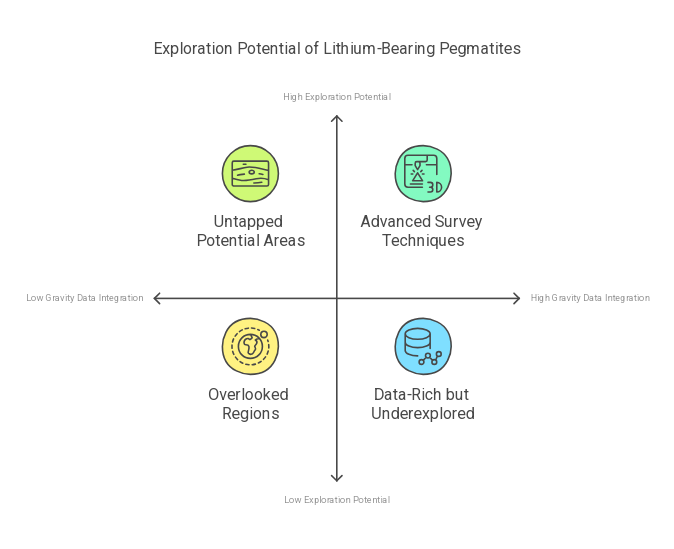
5. Green Energy Boom Potential
- Lithium’s Strategic Importance:
- Zimbabwe is emerging as a significant lithium producer, with the Bikita pegmatite leading the way.
- While some sources claim Zimbabwe ranks third globally after Australia and Canada, alternate views suggest that ranking depends on market dynamics and processing capacity.
- Future Prospects:
- With the global green energy boom, demand for lithium in battery production is soaring.
- The untapped potential in zoned pegmatites, particularly in northern regions, may soon drive renewed exploration and investment.
- Economic and Political Factors:
- The extent to which these deposits contribute to the green energy sector will hinge on economic viability, regulatory frameworks, and technological advancements.
In Summary
Zimbabwe’s lithium-bearing pegmatites are a treasure trove of resources with far-reaching implications:
- Geological Setting:
- These deposits are hosted in granitic pegmatites, often along the margins of batholiths, and are strongly associated with Archaean greenstone belts.
- Lithium Mineralogy:
- The principal lithium minerals include amblygonite, petalite, spodumene, and occasionally lepidolite, each contributing to the deposit’s overall economic value.
- Key Localities:
- From the world-class Bikita pegmatite to numerous promising pegmatites in Goromonzi, Hwange, and Mberengwa, Zimbabwe’s lithium potential is significant.
- Exploration and Future Development:
- While gravity data correlations remain an underutilized tool, modern geophysical and analytical techniques promise to refine exploration targets.
- The green energy boom may further unlock the economic potential of these lithium resources, provided that economic, regulatory, and technological challenges are addressed.
This detailed synthesis combines cutting-edge research with historical insights, presenting a robust framework that highlights both the current state and future promise of Zimbabwe’s lithium-bearing pegmatites.


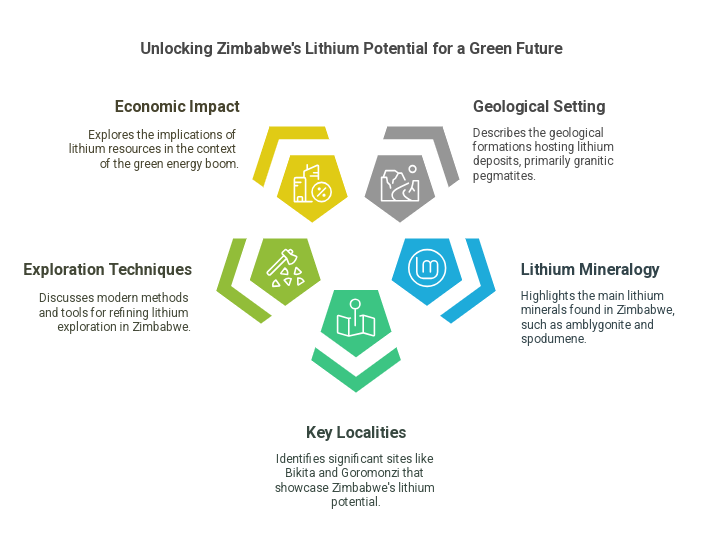
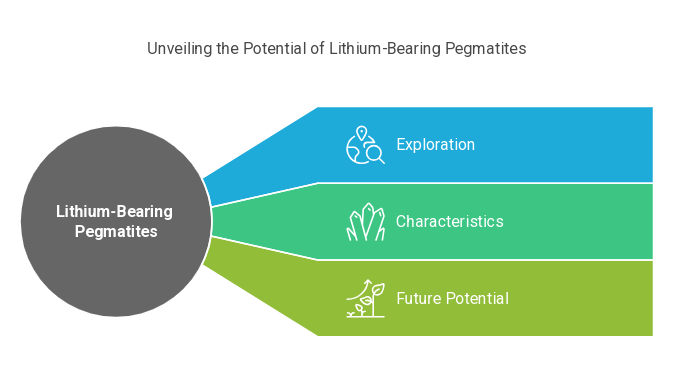
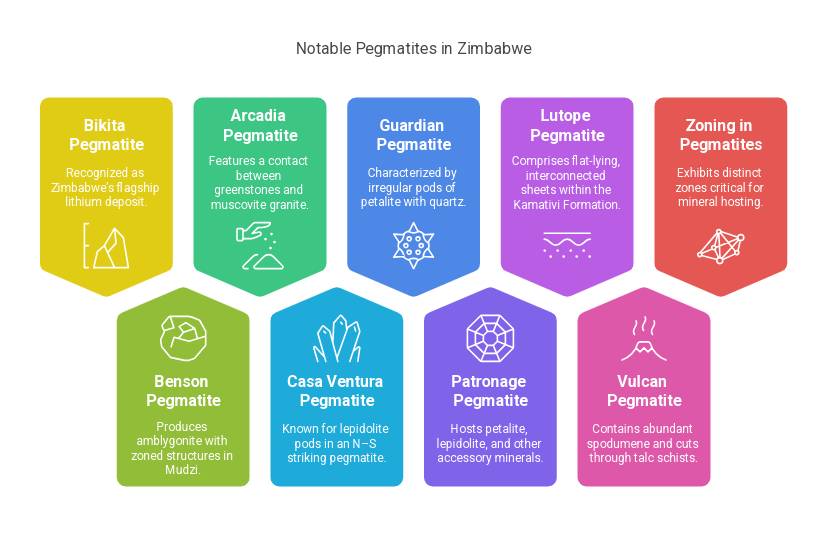

Comments ()